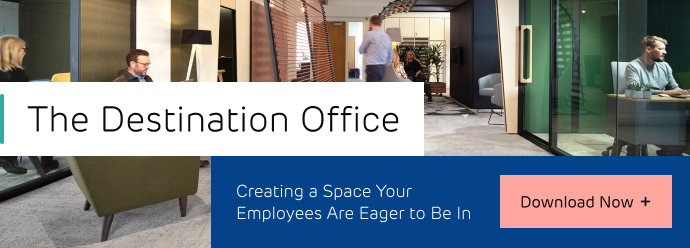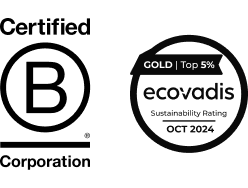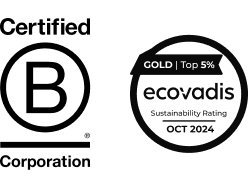As businesses adjust to hybrid working patterns, the need to balance open plan working with more flexible spaces for private meetings and solo work is becoming greater. Meeting pods and booths are increasingly being used to create more configurable working environments that can fulfil an ever-changing set of needs. But how do you choose the right workspace pod for you?
How to choose the right work pod for your business
Choosing the right style and combination of pods or booths for your business requires serious consideration.
If you’re going to avoid plonking an immovable, expensive and lightless fridge in the middle of your office floor, you should think carefully about your priorities first.
What is it going to be used for?
Meetings, hybrid collaboration, one-on-ones, individual work, confidential catch-ups? The answer to this question is important because it will have a huge impact on the kind of physical characteristics of the pod or booth you'll end up choosing:
-
How many people will you need to accommodate comfortably inside a pod at any given time and what furnishing will you need to fit into it?
-
What level of transparency and visibility should it offer between its occupants and the outside world? Is complete sound insulation imperative?
-
Do you want to be able to always see through the glass? Casper cloaking material can allow you to see into a pod but not see the content on the screens inside. Orangebox offers a glass panel that becomes opaque at the flick of a switch.
-
Do you want the pod itself to offer flexible accommodation internally? Do you need it to be flexibly partitioned? Do you need it sometimes to be open-sided and, at others, fully enclosed?
-
Do you need to support video conferencing for hybrid collaboration? What other technology will you need to make this a productive space?
.png?width=800&name=Screenshot%202022-01-31%20at%2014.39.10_ccexpress%20(1).png)
Stop and think about your future needs
Don't just think about the pod as it will be used in your current space.
Many businesses are now regularly moving the workspace pods they've invested in between floors and buildings - giving them the ultimate flexibility to reconfigure new spaces quickly and cheaply.
With this in mind, consider how flexible your pod needs to be:
-
Do you need a solution built on lockable casters with hand grips for easy movement across spaces?
-
Do you need a modular design allowing pods to be easily dismantled, reconfigured and expanded to fit different spaces and needs?
This flexibility may be crucial if you'll need to disassemble and store the pod efficiently for periods before you redeploy elsewhere.
The ability to scale up meeting room provision on demand may become more important as businesses cope with the extreme peaks and troughs in office use, brought about by hybrid working.
It could be argued that any work to physically construct meeting rooms in an open-plan office right now represents wasted money, as the future needs of businesses are so fluid and unknown.
Data from the CBRE shows the cost of building an on-site meeting room in London, exceeds the cost of buying a moveable pod solution by 33.5%.
Source: CBRE
All that said, you should never have to compromise on internal experience for a more lightweight and moveable construction.
What’s the quality of the experience going to be like inside?
The quality of the space, acoustics, air flow and technical connectivity offered is going to be key to how successfully the pod can be used.
Think of the safe and comfortable distance you’ll need between tables, chairs and walls. Can the walls support the bracketing of heavy tech equipment? What level of lighting do you need inside? For a pod to be a successful and popular addition to your workspace it will need to be a pleasurable space to inhabit, as well as one that is merely functional.
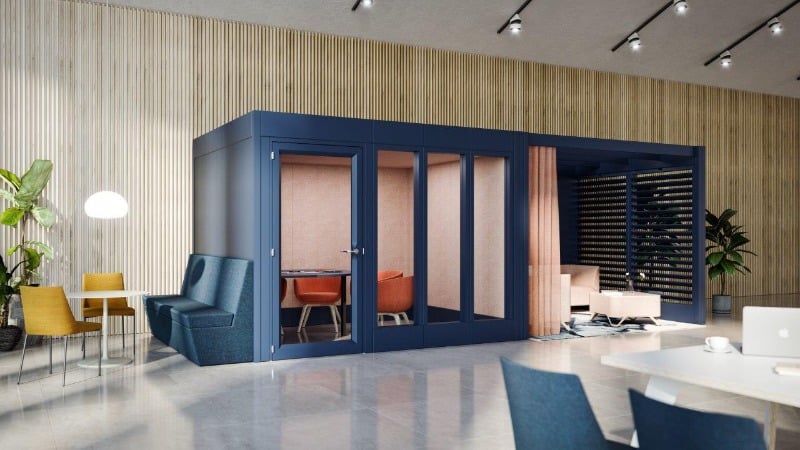
Peace in a pod?
This is certainly what is emerging from the research of pods in use. As Steelcase pod portfolio expert, Niki Watt, said in an interview:
“I think people are discovering that they want a great user experience when they’re using a pod. They want acoustics at the right level. They don’t want to feel like they’re in a submarine where they can’t hear anything or have any sense of the outside.”
This echoes employees' need for a deeper sense of belonging. Workers like being in the office because they enjoy the energy they get from being around others. So even when workers retreat to a pod to get focused work done, they still want to feel connected to the wider team.
Collaborative pods
Pods are also a great solution when looking to create collaborative environments with high quality acoustics. Orangebox Campers&Dens, for instance, offer options for integrating technologies and whiteboards to support both in-person and hybrid collaboration.
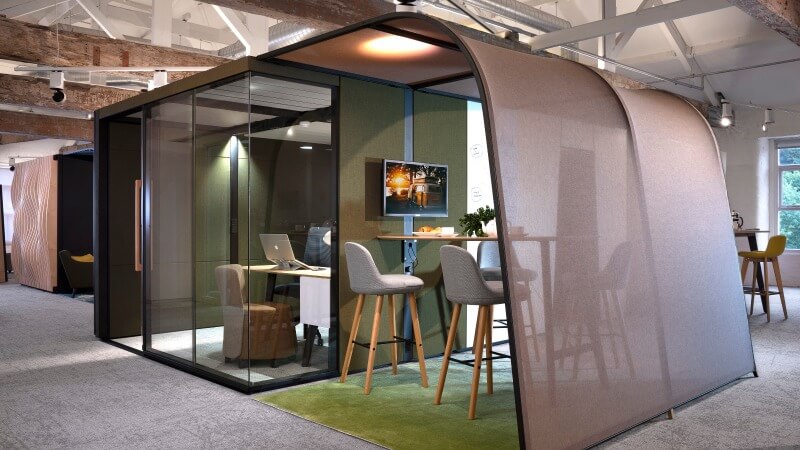
Accessible for all workers
Organisations are increasingly looking to create inclusive workspaces that promote employee health, safety and wellbeing. This means ensuring all workers have equal access to all products, technology and systems. You can create an inclusive environment with a mixture of office meeting pods and booths, offering sufficient circulation and level thresholds for accessibility.
Enhancing aesthetics
As well as being functional, most office pods are pretty pleasing on the eye, creating some added interest and personality to the workplace. There's scope to further enhance the look and feel of pods by adding artwork, branding images or biophilic design to external walls.
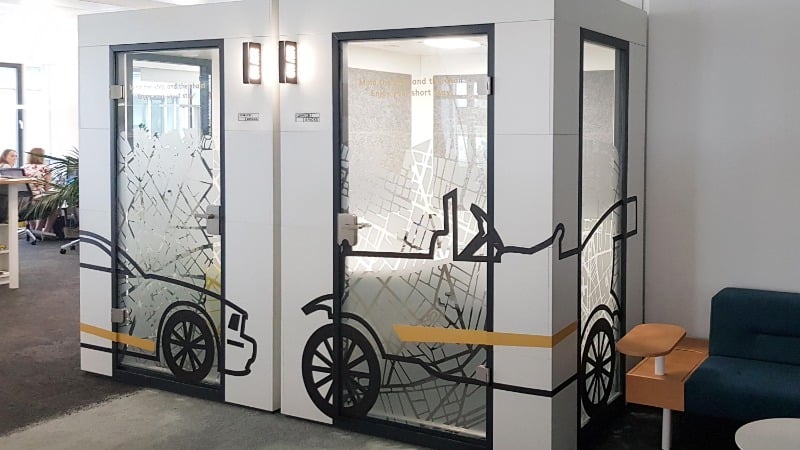
Safety considerations
Of course, a work pod is not just another piece of furniture - there are important safety considerations to factor in when making your choices. The right supplier will have considered fire and other regulations in their production and when they are selling the solution to you. Air³ pods by Orangebox, for instance, are created with a beautiful louvered ceiling that opens and closes. Its default setting is open.
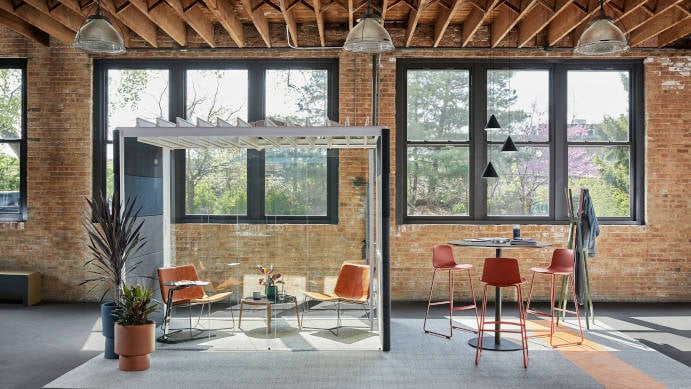
So, not only does it provide brilliant air flow, but it also means in many cases the building’s existing fire suppression system will work with the pod when it is installed.
You should, however, carefully consider all the health and safety implications that introducing a new enclosed space into your office might entail. If your office real estate stretches across territories, then your procurement team should clearly understand the restrictions that might apply in each and ensure your choices comply with them.
How to stop the pod hogs
Mark Zuckerberg’s famous desk sits in the middle of his hangar-like open-plan office in Menlo Park. But rumour has it he spends most of his time cocooned in an enclosed acoustic pod or one of the private meeting rooms that his HQ offers.
Internal policing of basic office etiquette should really be enough to stop the pod hogs, but if this is likely to be a problem, maybe you should consider investing in a range of different kinds of size and style of booth.
If pod blocking is a persistent problem with one individual - then this could be an indication that their existing work station is inadequate for their privacy needs. There are lots of individual phone booth and other designs that might be better optimised for the kind of work they need to do, and will mean they don’t have to retreat to shared meeting spaces to complete it.
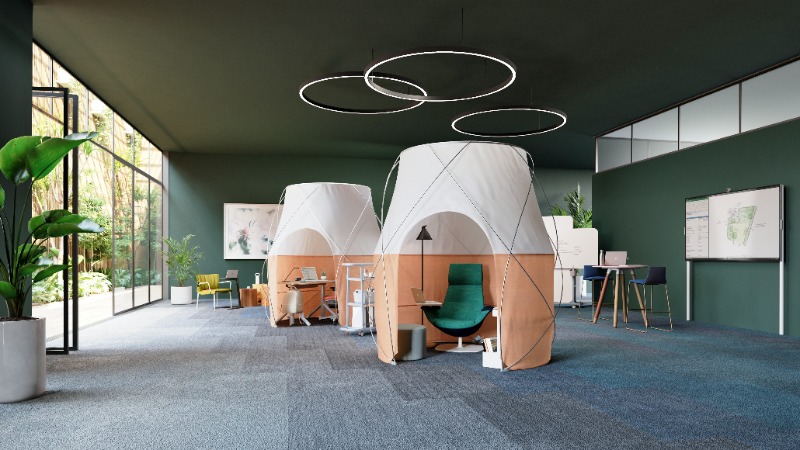
A huge array of choice
Modern office booths and acoustic meeting pods come in all shapes and sizes. They can answer different kinds of needs and be configured very rapidly for your specific requirements.
If you need to quickly set up your office for activity-based working, then they can instantly bring new kinds of spaces with different kinds of energy into play for you.
Some work pods can even be installed in half a day and with the right ‘plug and play’ power supply options - can be operational with the minimum of disruption.
Orangebox have a great range of solutions, including the Campers&Dens and Air³ products mentioned earlier in this blog post.
Some of our other favourites include:
Spacestor Residence Meet - Soundproof and acoustically tested, the Residence family of pods provide a high-quality option to create dedicated quiet spaces within the high-tech buzz of the modern workspace.
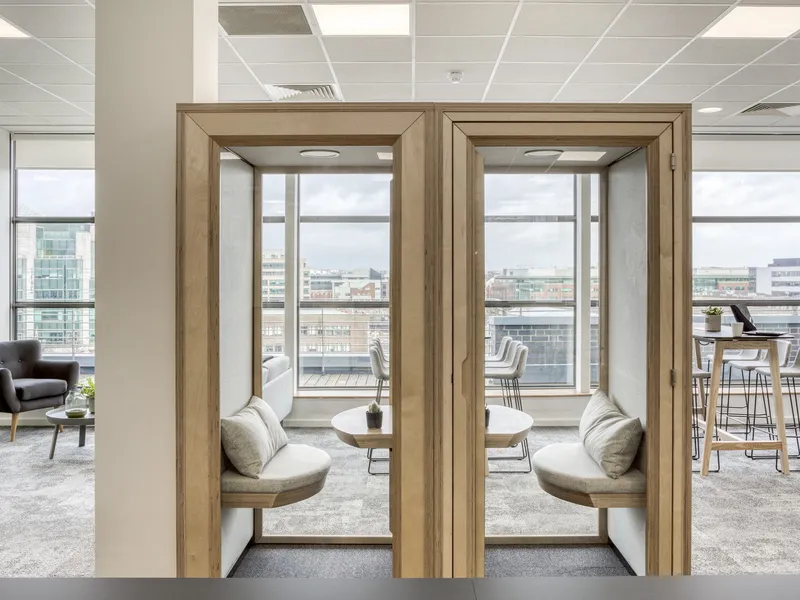
Orangebox On the QT - A comfortable space for workers to make a call, hangout, or simply think for a while. The outside wall doubles up as a whiteboard. And by placing a few pods together you can create a dedicated project area around a shared central space.
%20(1).jpg?width=800&name=My%20project%20(12)%20(1).jpg)
Silen Chatbox - Affordable, yet sleek, these high-quality pods are designed to support your ideas in reaching their full potential and come with carbon neutral certification.
Acquiring a range of work pods and meeting booths is a smart move for businesses who find themselves in a state of flux as modern working patterns continue to change so drastically.
It is a cost-effective way of retaining elements of the private workspace in an open plan office - bringing infinite configuration options to support all kinds of different projects.
Where the work pods themselves are easily moveable they can be used to control your office fit out budget; reconfiguring whole floors in buildings without the need for expensive construction and office refurbishment teams to be bought in.
For more pod inspiration, download our free ideas book.
Editor’s note: This blog post was originally published in November 2019 and has been updated for accuracy in March 2024.





